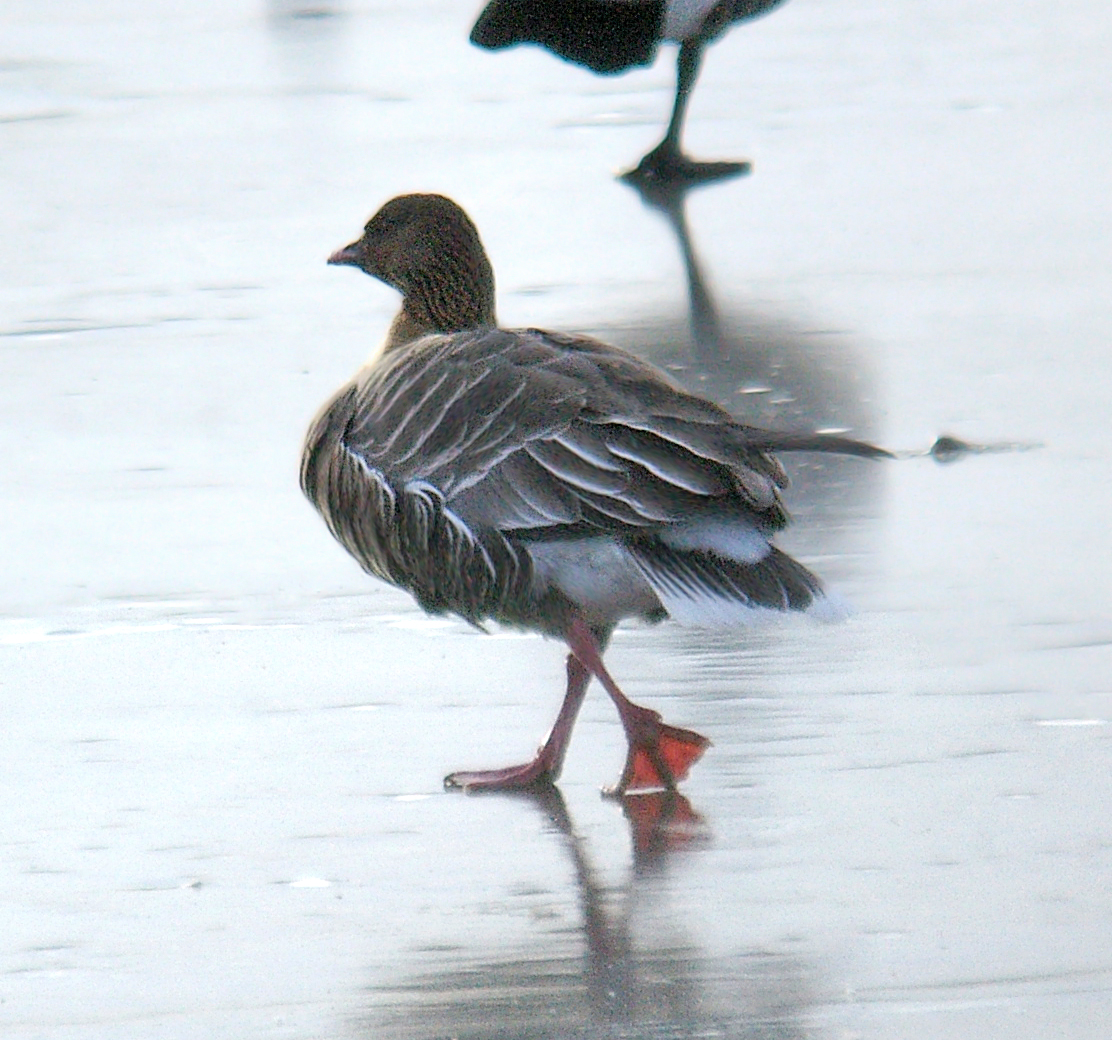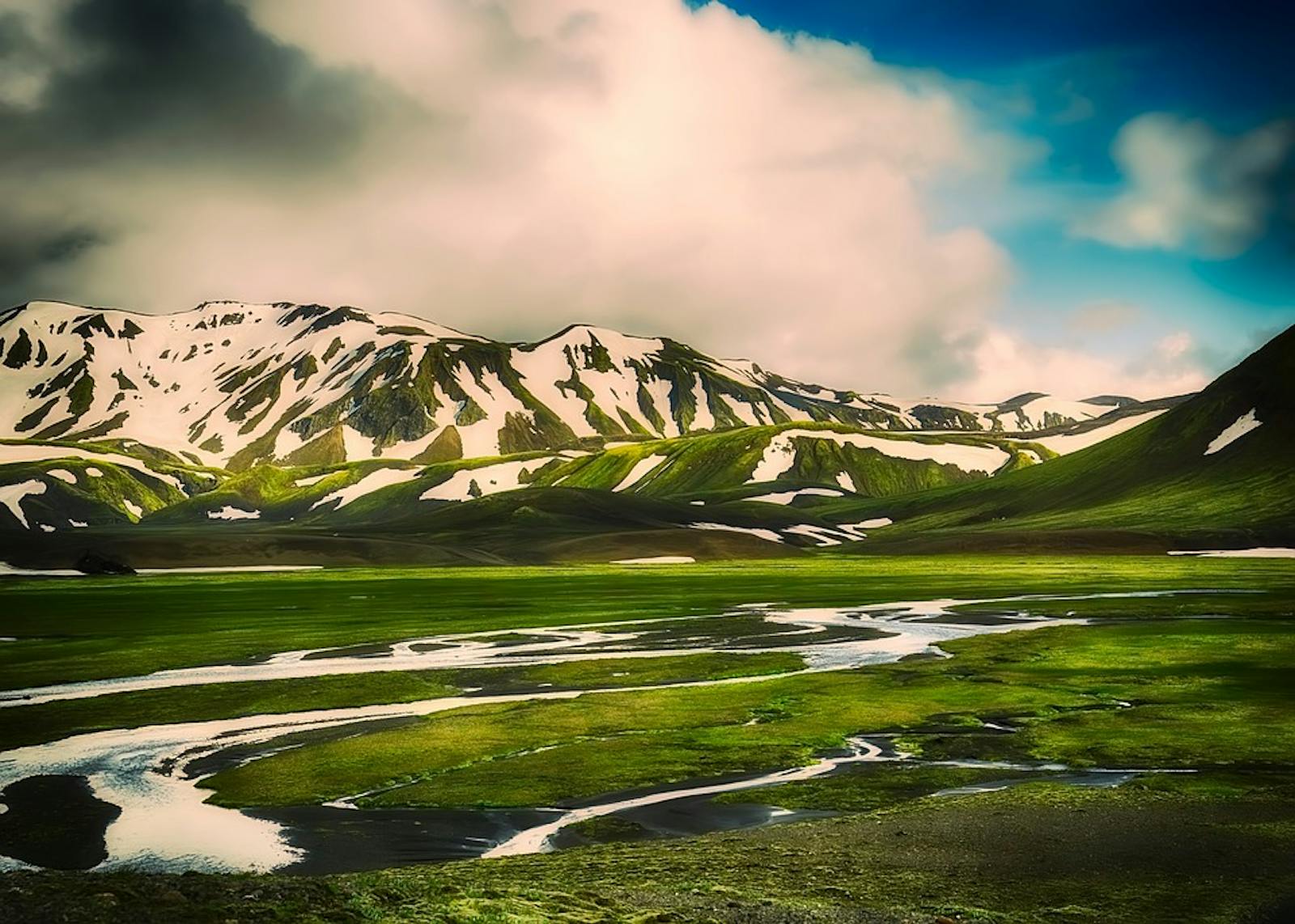Iceland Boreal Birch Forests and Alpine Tundra
The ecoregion’s land area is provided in units of 1,000 hectares. The conservation target is the Global Safety Net (GSN1) area for the given ecoregion. The protection level indicates the percentage of the GSN goal that is currently protected on a scale of 0-10. N/A means data is not available at this time.
Bioregion: Iceland (PA2)
Realm: Subarctic Eurasia
Ecoregion Size (1000 ha):
9,168
Ecoregion ID:
711
Conservation Target:
72%
Protection Level:
2
States: Iceland
Iceland, an entirely volcanic island located on the Mid-Atlantic Ridge, is being pulled apart at the rate of one centimeter per year. Some of the islands most active volcanic areas lie underneath glaciers so that when eruption takes place, it leads to huge meltwater floods and explosive activity. This highly energetic island is also where you will find internationally important breeding populations of birds, including the pink-footed goose. The world’s largest breeding ground for the goose is Thjorsarver Ramsar site of Wetland of International Importance.
Iceland is the second largest island in the North Atlantic Ocean with its northern edge situated just south of the Arctic Circle. Despite the islands northern position, the climate is relatively mild due to the influence of the Gulf stream. Mean annual temperatures are commonly between 0 to 4°C in the lowlands and between 0 and -4°C in the highlands. Average precipitation ranges anywhere from 400 mm annually in areas north of Vatnajökull Glacier, to greater than 600 mm annually in the rest of Iceland.
The frequent atmospheric low pressure systems and the periodic occurrence of storms blowing from the Arctic result in high wind speeds, often exceeding 50 m/s near mountains during severe storms. This has a negative effect on the habitat, with vast areas either devoid of vegetation or only having a very sparse cover. Most of the vegetation and agricultural areas are found in the lowlands close to the coastline. The interior of the country is largely arctic desert, with mountains, glaciers (including Europe’s largest; Vatnajökull), volcanoes and waterfalls. Many of the volcanoes are still active, including Hekla, Katla and Krafla.

The flagship species of the Iceland Boreal Birch Forests and Alpine Tundra ecoregion is the pink-footed goose. Image credit: Alan Schmierer, Creative Commons
This ecoregion is rich in bird diversity: over three hundred species have been observed, many are migratory birds from Arctic breeding grounds passing through on their way to warmer wintering sites. Resident birds colonize wetlands and coastal cliffs. Seven species of birds found on the island are globally threatened, including the snowy owl, Atlantic puffin, horned grebe and Leach’s storm petrel. Mammals make up a much smaller number of the island’s biodiversity, including the only rodents, long-tailed field mice, as well as the Arctic fox and the introduced American mink. Reindeer were imported to Iceland in the 18th century and are now found all over.
Volcanic activity is frequent in Iceland and causes severe erosion, leaving large areas devoid of vegetation and vulnerable to soil degradation. Drainage of wetlands for agriculture has not only changed the natural habitat, but also affected populations of birds that lived there. Most of the three hundred bird species are found in the Important Bird Areas, in which there are 99 in Iceland, including Arnarvatnsheidi-Tvidaegra, Gudlaugstungur-Alfgeirsungur, and Thjorsarver. There are 129 protected areas in Iceland, the largest of which is Vatnajokulsthjodgardur National Park (13,950 km2).

Atlantic puffin. Image credit: Creative Commons
Agriculture is at a relatively low intensity, however, it is likely to expand in the near future, due to improved growing conditions from a warming climate, which could impact the many internationally important breeding populations of ground-nesting birds. Introduced species such as is the American mink are also a threat to colonies of birds, which make up their diet. Tourism is a growing concern, as the number of visitors has grown rapidly over the last two decades, especially as they concentrate on a few popular sites.
Future offshore oil and gas exploration threatens this ecoregion. The construction of the Kárahnjúkar hydropower station involved damming two glacial rivers, negatively affecting fish downstream and grazing grounds for wild reindeer. Further hydroelectric development proposals include flooding the Thjórsárver wetlands, resulting in the potential loss of habitat for the pink-footed goose.
The priority conservation actions for the next decade will be to: 1) continue restoring lowland wetlands to provide important bird habitat; 2) expand protected areas and implement effective management plans; and 3) integrate conservation actions with land use and management plans in farmed areas.
Citations
- Arnalds, O., Gudmundsson, J., Oskarsson, H., Brink, S.H. and Gisladottir, F.O. 2016. Icelandic inland wetlands: characteristics and extent of draining. Wetlands, 36(4), pp.759-769.
- B. Arnalds, O., Dagsson-Waldhauserova, P. and Olafsson, H. 2016. The Icelandic volcanic aeolian environment: Processes and impacts—A review. Aeolian Research, 20, pp.176-195.
- Jóhannesdóttir, L., Alves, J.A., Gill, J.A. and Gunnarsson, T.G. 2017. Reconciling biodiversity conservation and agricultural expansion in the sub-arctic environment of Iceland. Ecology and Society, 22(1).


.png?auto=compress%2Cformat&w=300)

